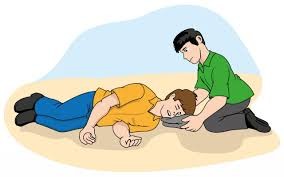Understanding and Managing Partial Seizures Naturally


What Are Partial Seizures and How Do They Affect People?
Partial seizures, also called focal seizures, happen when unusual electrical signals affect only one part of the brain. These seizures may cause strange feelings, sudden movements, or a temporary loss of awareness.
Many people wonder: Can someone have a seizure without fully passing out? Yes. In partial seizures, a person may stay awake and aware, or they may feel confused and unable to respond for a short time.
Common signs of partial seizures:
- Unusual smells, tastes, or sounds
- Involuntary shaking in one arm or leg
- Sudden emotional changes like fear or happiness
- Staring blankly or not responding for a short time
- Repeating the same movement, such as hand rubbing or lip-smacking
Partial seizures can be frightening, especially when they happen often. Understanding what they are is the first step in helping someone manage them and live a more comfortable life.
Common Triggers to Avoid for Better Seizure Control
While seizures can sometimes happen without warning, many people notice certain things that seem to bring them on. These are known as triggers. Avoiding triggers can help reduce how often seizures happen and make living with the condition more manageable.
Common seizure triggers to watch out for:
- Lack of sleep or irregular sleep schedule
- High stress or emotional upset
- Flashing lights or strong visual patterns
- Skipping meals or low blood sugar
- Illness with fever or infection
- Suddenly stopping medication
- Drinking alcohol or using recreational drugs
Keeping a seizure diary can help people notice what may trigger their episodes. Writing down what happened before each seizure can reveal patterns over time. Once you know your personal triggers, you can take steps to avoid them and lower the risk of seizures. Working with your doctor to build a daily routine that supports brain health is a smart and effective step in seizure management.
Causes of Partial Seizures
There are many reasons why someone may experience partial seizures. Sometimes, doctors never find a clear cause, but in other cases, they can identify a trigger or health issue behind it.
Possible causes include:
- Head injuries or trauma
- Brain infections such as meningitis
- Strokes or bleeding in the brain
- Scar tissue from brain surgery or illness
- Genetic or inherited conditions
Even though these causes sound serious, it's important to remember that many people with partial seizures can live full lives with the right care and support.
Types of Partial Seizures
Partial seizures are not all the same. They are usually grouped into two main types depending on how they affect awareness.
Types of partial seizures:
- Simple partial seizures – The person stays fully awake and aware. They may feel strange but know what’s going on around them.
- Complex partial seizures – The person may be confused, act strangely, and not remember the seizure afterward.
Both types may last only a minute or two, but they can be scary or dangerous if they happen during daily tasks like driving or cooking. That’s why finding good ways to manage them is very important.
How to Recognize a Seizure Episode
Sometimes, people don’t realize they are having partial seizures, especially if they involve brief confusion or strange feelings. Others around them may notice something is wrong before the person does.
How to spot a seizure:
- Sudden pause in speaking or moving
- Staring without responding
- Smacking lips or chewing movements
- Picking at clothes or tapping fingers
- Sudden fear, laughter, or confusion
Recognizing these signs early helps get treatment started and can prevent injuries or embarrassment for the person experiencing the seizures.
What Should You Do During a Partial Seizure?
If someone has a partial seizure, the most important thing is to keep them safe and calm. You should never try to hold them down or put anything in their mouth.
Steps to take:
- Stay with the person until the seizure ends
- Speak gently and clearly if they are confused
- Move away sharp or dangerous objects
- Time the seizure — if it lasts more than a few minutes, get help
- Offer comfort and support afterward
These simple steps can make a big difference and help reduce fear during a seizure.
Gabatop (Gabapentin): A Helpful Medicine for Partial Seizures
Gabatop is a medicine whose active ingredient is Gabapentin. It is used to help people who suffer from partial seizures by calming the unusual brain activity that causes them. It does not cure the condition, but it can reduce how often seizures happen and how strong they are.
How Gabatop may help:
- Calms the nerve signals in the brain
- Reduces how often partial seizures occur
- Helps people feel more in control
- Can improve daily life and reduce worry
Gabatop is usually taken daily as part of a long-term plan to manage seizures. It is often combined with other safety steps like enough rest, avoiding triggers, and regular check-ups with a doctor. Before starting Gabatop, a doctor may check how it fits with other medicines and health conditions. It is important to take it just as directed and not stop suddenly without speaking to a healthcare provider. Many people using Gabatop report fewer seizures and better well-being over time.
Living With Partial Seizures
Even though partial seizures can be a long-term challenge, they do not have to take over your life. With the right information, support, and medicine like Gabatop, many people manage well and enjoy active, happy lives. Being aware of your triggers, building a strong support system, and sticking to your treatment plan can make a big difference. No one needs to go through this journey alone. Talking openly with doctors, family, and friends can help you feel more supported. Learning how to handle seizures step by step gives you the confidence to live each day with peace of mind.
Article Post: Editorial Team of RXShop.md
(Updated at Jul 26 / 2025)